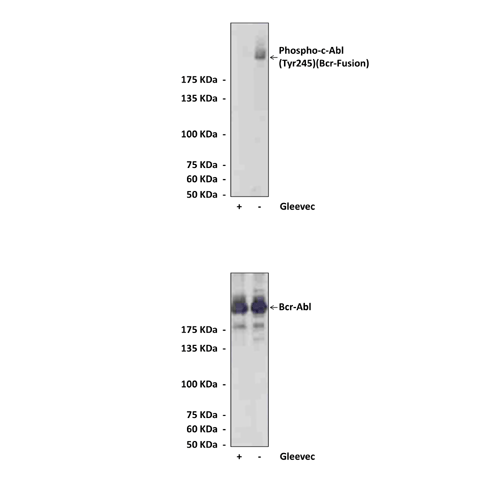Product Sheet CC1012
Description
BACKGROUND c-Abl is a non-receptor protein-tyrosine kinase related to the Src family. The N-terminal region of c-Abl is structurally similar to Src and includes Src homology regions 3 and 2 (SH3 and SH2) and the catalytic domain; however, Abl differs from all Src family members by the presence of a large (90 kDa) C-terminal domain. Several functional motifs have been defined in the Abl C-terminus, including a nuclear localization signal (NLS), DNA binding domain, actin binding domain, sites for phosphorylation by protein kinase C and cdc-2 kinase, and binding sites for the adapter proteins Crk, Grb-2 and Nck.1 c-Abl has been implicated in many cellular processes including differentiation, division, adhesion, death, and stress response. c-Abl becomes activated in response to numerous extra- and intra-cellular stimuli.2 c-Abl is localized in the nucleus and the cytoplasm, where it plays distinct roles. The effects of c-Abl are mediated by multiple protein-protein and protein-DNA interactions and its tyrosine kinase domain.3 Its oncogenic counterpart, the Bcr–Abl fusion protein, causes particular human leukaemias. Use of targeted therapy that inhibits BCR-ABL kinase activity by Gleevec leads to hematologic and cytogenetic responses in affected individuals.4
Mutation of a tyrosine (Tyr-245) in the linker region between the Src homology 2 and catalytic domains that is conserved among the Abl family inhibited the autophosphorylation-induced activation of wild-type c-Abl by 50%, whereas the c-Abl Y245F/Y412F double mutant was minimally activated by autophosphorylation. These results support a model where c-Abl is inhibited in part through an intramolecular Src homology 3-linker interaction and stimulated to full catalytic activity by sequential phosphorylation at Tyr-412 and Tyr-245.5
REFERENCES
1. Hantschel,O. & Superti-Furga, G.: Nat Rev Mol Cell Biol. 5:33-44, 2004.
2. Sirvent, A. et al: Biol Cell 100:617-631, 2008.
3. Wang, J.Y.: Nat Cell Biol. 6:3-7, 2004.
4. Curran, M. P. et al: Biodrugs, 18:207-210, 2004.
5. Brasher, B. B. & Van Etten, R. A.: J. Biol. Chem., 275:35631-7, 2000.
1. Hantschel,O. & Superti-Furga, G.: Nat Rev Mol Cell Biol. 5:33-44, 2004.
2. Sirvent, A. et al: Biol Cell 100:617-631, 2008.
3. Wang, J.Y.: Nat Cell Biol. 6:3-7, 2004.
4. Curran, M. P. et al: Biodrugs, 18:207-210, 2004.
5. Brasher, B. B. & Van Etten, R. A.: J. Biol. Chem., 275:35631-7, 2000.
Products are for research use only. They are not intended for human, animal, or diagnostic applications.
Details
Cat.No.: | CC1012 |
Antigen: | An epitope surrounding and including Tyr245 of human c-Abl. |
Isotype: | Rabbit polyclonal IgG |
Species & predicted species cross- reactivity ( ): | Human, Mouse, Rat |
Applications & Suggested starting dilutions: | WB 1:1000 IP n/d IHC (Paraffin) n/d ICC n/d FACS n/d |
Predicted Molecular Weight of protein: | 140 kDa |
Specificity/Sensitivity: | This affinity purified antibody detects endogenous Phospho-c-Abl in cell lysates. |
Storage: | Store at -20°C, 4°C for frequent use. Avoid repeated freeze-thaw cycles. |
*Optimal working dilutions must be determined by end user.
Products
| Product | Size | CAT.# | Price | Quantity |
|---|---|---|---|---|
| Polyclonal c-Abl, Phospho-Tyr245 Antibody: Polyclonal c-Abl, Phospho-Tyr245 Antibody | Size: 100 ul | CAT.#: CC1012 | Price: $333.00 |

